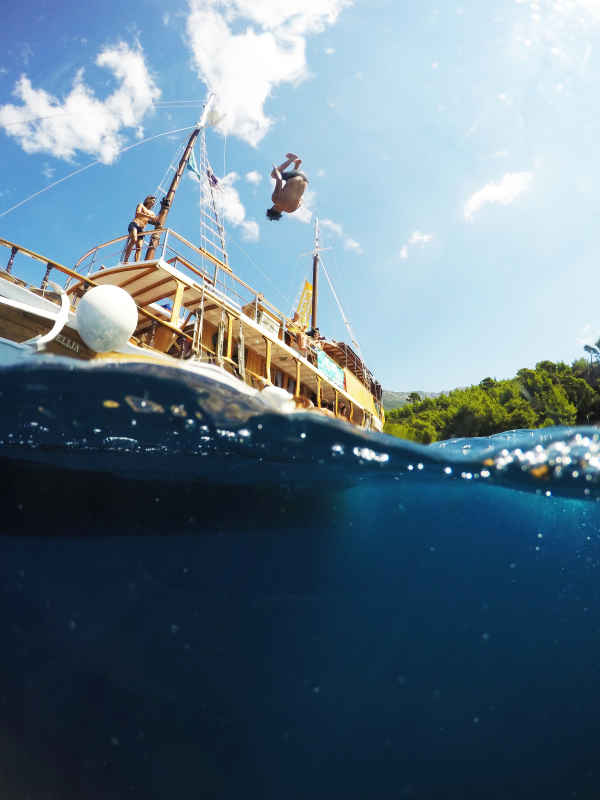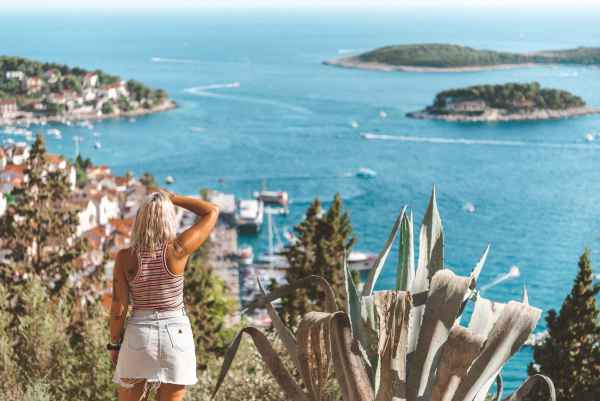
Heading to Split for a couple of days? The second largest city in Croatia, known for its excellent mix of modern life and ancient ruins is definitely worth exploring. Here’s a plan of where to go and what to see in 48 hours.
1 day in Split | The Must-Do's
Start your day feeling fresh and healthy with an acai bowl from Makamaka, located within Diocletian’s Palace. This health food restaurant produces absolute bangers which will have you coming back again. You can either have inside or take-away.
If you want more of a traditional Croatian treat, try some burek. Located at every bakery within the town, burek is the traditional breakfast of farmers and fisherman nationwide. A good place to buy one is St Burek, one of the oldest burek establishments in Split.
Once you have had your fill, explore Diocletian’s Palace. Diocletian is the former ruler of Rome who came to Split to retire in the 4th century AD and so this Palace is his retirement home. Check out the streets inside filled with quaint souvenir shops and boutiques. Go down to the cellars and get some souvenirs from the market there. Head to the Split Cathedral and if you’re lucky there might be some street musicians or gladiators performing for the crowd nearby. A visit to Split isn’t complete without getting a photo in front of the St Gregory of Nin statue. It’s said that if you rub Gregory’s big toe, you will have not only good luck for life, but also a trip back to Split in the future.
For those who are after something a little quirky to do, go to Froggyland: the life works of a Hungarian taxidermist who has stuffed 507 frogs and put them into different positions. Imagine frogs doing trapeze, playing poker and going to school. For only 50 kunas entry, how could you say no?
For lunch, grab some bread rolls and fillings from the supermarket within the Palace and sit in the park by the St Gregory statue, or sit by the water on the Riva Promenade. Then start doing what Croatians do best: eat and people watch.
After lunch, it’s no doubt going to be rather warm so definitely check out the local beaches. The most popular beach in Split is Bacvice Beach – complete with bars and sunbeds. Watch locals play the traditional ball game picgin, relax with a book, or dive into the crystal clear waters. For a beach that’s a bit more quiet, head to Bene beach. Enjoy the Dalmatian way of life.
Wander over to Buffet Fife for dinner. Located at the end of the Riva Promenade, Buffet Fife does delicious traditional meals at a low price. Best place to eat what the Dalmatians do with some seafood and grilled vegetables, or maybe a traditional pastacarda. It definitely pays to pre-book a table at this popular joint, enjoyed by locals and tourists alike.
Now that you’re full and happy, walk around the corner and head up Marjan Hill. Marjan Hill is a forest park and is larger than Central Park in NYC. It’s about a 30 minute walk and once you get to the top, there is a look-out with exceptional 360° views of the city and sea. It’s also the perfect place to watch the sunset.
If you’re feeling a little thirsty, head to backpacker bar Charlie’s or pub Fabrique for a couple of beverages and some good atmosphere. Fancy a boogie afterwards? inBox has got you sorted with good tunes and good vibes all round.
If you have more time | Local experiences
With another day up your sleeve, it’s the perfect opportunity to get a little further afield. Book a Jadrolinija or Kapetan Luka ferry in advance and jump onboard to get to a nearby island such as Brac, Hvar or Vis for the day. All are excellent islands to wander around, grab a cocktail and explore the beaches.
If you’re a bit of a Game of Thrones fan, you might want to head to the Fortress of Klis (the City of Meereen). Only a 20 minute drive away by local bus 22 or 34, you can check out this famous Game of Thrones sight for a fee. In the afternoon, before you head back to Split, visit the town of Solin where you can visit the archaeological site that was once the most important city in the Roman Empire.








